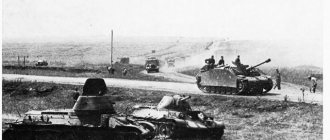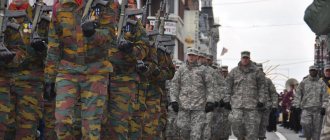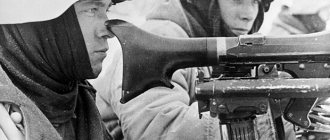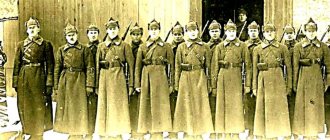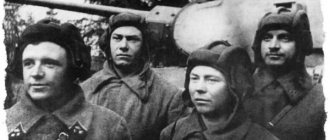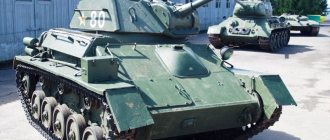| This article requires additional links for verification . |
| 17th German Infantry Division 17. Infantry Division | |
| Active | October 1, 1934 - May 8, 1945 |
| A country | Nazi Germany |
| Branch | Army |
| Type | Infantry |
| Size | Separation |
| German 17th Infantry Division (15 October 1935 - January 1943) | |
| Parent block | Wehrkreis VII |
| Components | Infantry Regiment 21 Infantry Regiment 55 Infantry Regiment 95 Divisional units 17 |
| German 17th Infantry Division (January 1943 - May 8, 1945) | |
| Parent block | Wehrkreis VII |
| Components | Grenadier Regiment 21 Grenadier Regiment 55 Grenadier Regiment 95 Divisional units 17 |
17th Infantry Division
was an infantry division from Nazi Germany active before and during World War II. Formed in 1934, it took part in most of the Wehrmacht's campaigns and was destroyed in January 1945. Recreated in Germany, it surrendered to the Allies in May of that year. The division is responsible for a number of war crimes. [1]
Note
. For the 17th German Infantry Division in the Army of the German Empire before 1914 that took part in the First World War, see 17th Division.
History[edit]
The unit was formed in October 1934 in Nuremberg under the name Wehrgauleitung Nürnberg
.
Shortly after its creation it was renamed Artillerieführer VII
.
[Note 1] Although created from the beginning as a cadre
unit, both names were intended to refer to much smaller units, since German military strength was still limited by the Treaty of Versailles.
After Adolf Hitler abandoned the treaty and officially announced the creation of the Wehrmacht in October 1935, the unit was renamed the 17th Infantry Division
.
The organic regimental units of this division were formed by the expansion of the 21st Bavarian Infantry Regiment of the 7th Reichswehr Infantry Division. The division took part in the annexation of Austria in March 1938. During the Invasion of Poland it was reinforced by the Leibstandarte SS Adolf Hitler and attached to the German 8th Army under General Johannes Blaskowitz. Under the command of General Herbert Loch, the division saw heavy fighting in Silesia, and later in the area around Łódź. At Pabianice he encountered units of the Polish 28th Infantry Division and the Volyn Cavalry Brigade. After the war, the Poles accused the division of atrocities.
Maximilian von Weichs and Herbert Loch 1941, Chernigov
War crimes[edit]
Throughout the war, soldiers of the 17th Division committed a number of war crimes, most notably in Poland during the 1939 campaign. [1] During the war crimes investigation carried out by the KBZPNP commission, the predecessor of the Institute of National Remembrance, it was established that the first major war crime occurred between 3 and 4 September 1939 in the vicinity of Zlochev. In a large-scale massacre, soldiers of the 17th Division burned about 80% of the buildings in the city and killed without trial about 200 Polish citizens of Polish and Jewish ethnicity, of which only 71 were identified after the war, while the remaining victims could not be identified. as they were war refugees unknown to the locals.[2] Some victims were burned alive, and the bodies of others were thrown into burning houses. After the war, Polish authorities provided West German prosecutors with investigation documents, as well as details of 71 identified victims. However, the latter refused to initiate criminal proceedings for war crimes for various reasons. German authorities argued that it was impossible to determine which units of the 17th Division took part in the crimes, since the 1st chapter of the war diary of Adolf Hitler's Leibstandarte SS regiment was missing. Moreover, German prosecutors argued that the acts described by witnesses must have been directly related to military operations, in particular to the fight against partisans
[Note 2] and that all civilian victims were
hostile to German forces
.
[2] The only two cases excluded from this argument were the murder of a one-and-a-half-year-old child killed by the butt of a German soldier's rifle, and the case of a wounded woman thrown into a burning house. The previous case was explained away as an ordinary crime (and as such not sued), while the second case was dismissed due to the inability to find a direct culprit
. [2] The same argument was made in relation to 10 Polish peasants executed in the nearby village of Grojec Wielki after a Polish reconnaissance plane appeared in the area. [3]
In a separate case investigated post-war, the KBZPNP commission demanded the prosecution of the commanders of the 10th and 17th divisions who took part in the massacre of several dozen Poles in the village of Włyń near Łódź. [4] [Note 3] All cases of murder of Polish civilians in this village were dismissed by German prosecutors on April 22, 1974. [5] German authorities argued that it was possible that all civilians trying to escape German troops were in fact partisans
.
This was the reason in the case of a certain Ochetsky, who was shot while trying to save his cattle from a barn that had been set on fire by German soldiers. German authorities argued that it was fair to assume that he was trying to escape from German soldiers
.
[6] The same reasoning was given in the case of a mentally ill man who was shot and killed on the same day. In the case of Wawrzyn Pieczyk, who was killed while wounded and unconscious, it was argued that he may have feigned unconsciousness in order to escape from German soldiers
, [4] [6] while in the case of Józef Jawor, a man who did not stop when asked, but instead hid in his house, where he was shot through the door, explained as
a murder committed during a fight
.
[6] The case of Maria Konieczny, a deaf woman who was shot after she failed to respond to a German soldier, was considered a general crime, [Note 4] while the murder of Józef Galka was explained as legitimate because of a photograph of his brother in the Polish military The form found in Galka's wallet was evidence that he may have been a partisan himself
. [6] In the same decision, German authorities stated that the patients of the psychiatric hospital in the city of Wartha, killed by soldiers of the 17th Division in the hospital and dressed in hospital pajamas, were victims of an ordinary crime, and not a war crime or murder. [Note 4]
In addition to this, the Leibstandarte
The 17th Division was known for burning down every village it passed through. [7]
After the invasion of Poland[edit]
After the war with Poland, the unit was withdrawn to Germany, and then participated in the Battle of France as part of the XIII Corps. Subsequently, in the summer of 1940, the division trained to take part in the failed Invasion of England. In 1941, he took part in Operation Barbarossa as part of Army Group Center. In the fall of 1941, he took part in the Battle of Moscow. Having suffered heavy losses, she was withdrawn to France in June 1942. In April 1943, the division returned to the Eastern Front, fighting near the Mius River, Nikopol, Uman, Chisinau and Iasi. In August 1944, the unit was transferred to Poland and fought to contain Soviet bridgeheads on the Vistula River, in the Warka and Radom area . She remained in this sector until she was heavily damaged during the Soviet offensive on the Vistula-Oder in January 1945. The division was then rebuilt from remnants and fought in April and May 1945 in the Görlitz area. At the end of the war he was in the Riesengebirge mountains (today Karkonosze).
The main myth about the Wehrmacht divisions
Somehow it happened that we have no information at all on the composition of German divisions in the Second World War. On the one hand, there are many sites where you can see the detailed structure of a regiment, battalion, company, and find out the exact number of cooks, shoemakers and pistols.
But at the same time, as it turns out, even those who are interested not just in the Second World War, but also specifically show an interest in the Wehrmacht, have absolutely no idea how the composition of German divisions changed during the war. At the same time, the staffing of the German infantry division of the 1941 model is described in detail, such as it was during the attack on the Soviet Union, and it is this composition that is compared with the staff of the Soviet rifle divisions of the 42nd, 43rd and 44th years. Which leads to a very unexpected, and certainly incorrect, result.
Therefore, I decided to offer you a certain amount of information that may seem boring to someone. But it turns out that after the publication of my book (more than ten years ago), in which the structure of the German armed forces was described in some detail, no one else published this data in Russian. And my book “German Armed Forces. 1939-1945”, published in a small edition, is now impossible to find, although it is referred to a lot and often. And, unfortunately, I lost the electronic version, so I can’t put it online.
So, let's just look at the composition of German infantry divisions, starting in 1941, especially since there are no fundamental differences from the staff of the first years of the war.
The Wehrmacht infantry division in 1941 consisted of:
- three infantry regiments, each with three infantry battalions. The battalion has three infantry (12 light machine guns, 3 anti-tank rifles and 3 50 mm mortars) and a machine gun company (12 heavy machine guns and 6 81 mm mortars). The regiment also includes an anti-tank company (9 37-mm and 2 50-mm anti-tank guns), a company of infantry guns (2 150-mm and 6 75-mm infantry guns), and an engineer platoon. The infantry company consisted of three platoons and an anti-tank section. The platoon has four infantry sections and a mortar section. The squad consists of 10 people, armed with 1 light machine gun, 1 submachine gun, 7 rifles and 2 pistols;
- one artillery regiment: three light divisions - 12 105 mm howitzers in three batteries, and one heavy - 12 150 mm howitzers in three batteries;
- motorized anti-tank division: three anti-tank companies with 12 37-mm anti-tank guns each;
- reconnaissance battalion: scooter (9 light and 2 heavy machine guns, 3 anti-tank rifles, 3 50-mm mortars) and cavalry (9 light and 2 heavy machine guns) squadrons, heavy weapons squadron (2 75-mm infantry guns, 3 37-mm anti-tank guns and 3 light armored vehicles);
— sapper battalion: three sapper companies (9 light machine guns and 3 anti-tank rifles in each);
— communications battalion, service and support units. Most divisions had a field reserve battalion of three to five companies.
By the beginning of the war against the USSR, divisions of different waves of formation had differences. In 15 divisions of the 3rd wave, instead of a reconnaissance battalion
Commanders [edit]
- Lieutenant General Herbert Loch, 1 September 1939
- Lieutenant General Ernst Günzel, 28 October 1941
- Lieutenant General Gustav-Adolf von Zangen, December 25, 1941
- Major General Richard Zimmer, 1 April 1943
- Oberst Scheiker, December 1943
- Major General Paul Schricker, January 1944
- Oberst Otto-Hermann Brücker, February 1944
- Oberst Georg House, 15 March 1944.
- Oberst Theodor Preu, 1 April 1944.
- Lieutenant General Richard Zimmer, April 1944
- Major General Max Sachsenheimer, 4 September 1944
Notes[edit]
- ↑
Literally "Artillery Commander No. 7", the hidden name of the artillery commander of the former 7th Reichswehr Infantry Regiment who took command of the newly formed Wehrmacht unit and after whom the unit was named to hide its size. , and to disguise your numbers - The German term Freischärler
("irregulars", lit. "Free Riflemen") is used to designate all non-combatant personnel taking part in hostilities, as described in modern German legislation: the Law on the
Special Penal Code for Time of War
(German: Kriegssonderstrafrechtsverordnung) of 17 August 1938 - In fact, the Polish commission presented to the German authorities documents only on the cases of six Polish citizens killed that day, who were known by name and whose cases could be sufficiently investigated.
- ^ab And thus, subject to no claims
New in blogs
For some reason, it is believed that in June 1941, no less than 5 million Wehrmacht soldiers crossed the border with the USSR. This common myth is easily refuted.
The strength of the Wehrmacht in June 1941 reached:
7,234 thousand people (Müller–Hillebrandt) including:
1. Active army - 3.8 million people.
2. Reserve Army – 1.2 million people.
3 . Air Force - 1.68 million people.
4. SS troops - 0.15 million people.
Explanation:
The reserve army, numbering 1.2 million people, did not participate in the aggression against the USSR. It was intended for military districts in Germany itself.
Civilian Hiwis were taken into account in the total number indicated above. At the beginning of the Second World War they did not actively participate in battles.
WHERE WERE THE WEHRMACHT TROOPS LOCATED?
The Wehrmacht in June 1941 had about 700,000 soldiers in France, Belgium and Holland in case of an Allied landing.
In the remaining occupation zones—Norway, Austria, Czechoslovakia, the Balkans, Crete, Poland—no less than almost 1,000,000 soldiers were taken from the Wehrmacht.
Riots and uprisings broke out regularly and to maintain order it was necessary to have a large number of Wehrmacht troops in the occupied territories
General Rommel's African Corps had about 100,000 people. The total number of Wermath troops in the Middle East region reached 300,000 people.
HOW MANY VERMATH SOLDIERS CROSSED THE BORDER WITH THE USSR?
Müller-Hillebrandt, in his book “German Land Army 1933-1945” gives the following figures for forces in the East:
1. In army groups (i.e. “North”, “- author’s note) - 120.16 divisions - 76 infantry, 13.16 motorized, 17 tank, 9 security, 1 cavalry, 4 light, 1 mountain rifle divisions - the “tail” of 0.16 divisions arose due to the presence of formations that were not consolidated into divisions.
2. The OKH has 14 divisions behind the front of the army groups. (12 infantry, 1 mountain rifle and 1 police)
3. The Civil Code reserve includes 14 divisions. (11 infantry, 1 motorized and 2 tank)
4. In Finland - 3 divisions (2 mountain rifle, 1 motorized, another 1 infantry arrived at the end of June, but we will not count it)
And in total - 152.16 divisions, out of 208 divisions formed by the Wehrmacht. These include 99 infantry, 15.16 motorized, 19 tank, 4 light, 4 mountain rifle, 9 security, 1 police and 1 cavalry divisions, including SS divisions.
Really active army
According to Müller-Hillebrandt, of the 3.8 million active army, 3.3 million people were concentrated for operations in the East.
If we look at Halder’s “War Diary”, we will find that he defines the total number of the active army as 2.5 million people.
In fact, the figures are 3.3 million people. and 2.5 million people do not strongly contradict each other, since in addition to the divisions themselves in the Wehrmacht (as in any other army), there were a sufficient number of units listed in the active army but essentially non-combat (builders, military doctors, etc., etc. ).
3.3 million Müller-Hillebrandt includes both combat and non-combat units, and 2.5 million people. Galdera - only combat units. So we will not be much mistaken if we assume the number of Wehrmacht and SS combat units on the eastern front at the level of 2.5 million people.
Halder determined the number of combat units that could participate in hostilities against the USSR in June at 2.5 million people.
LEVELED FORMATION
Before the attack on the USSR, the German army had a clearly defined echelon formation.
The first, shock echelon - Army Group "North" - included 120 divisions, incl. 3.5 motorized SS divisions.
The second echelon - the operational reserve, so to speak - was located directly behind the fronts of the army groups and consisted of 14 divisions.
The third echelon is the reserve of the main command, which also includes 14 divisions.
That is, the attack came in three streams.
WEHRMACHT ALLIES
Most of them entered the war later than Germany and their participation at the very beginning was limited to only a few divisions.
Later, in 42-43, the number of the allied contingent of Dastigal was 800,000 people.
Most of the Allied troops were on the Eastern Front in 1943
RESULTS
In June 1941, 2.5 million soldiers crossed the border with the USSR. They were opposed by 1.8 million soldiers of the Red Army.
Directive No. 1 only supplemented the order to bring the troops to full combat readiness... but the generals sabotaged it.
On June 20, they sent most of the flying squadrons on vacation, and on June 21, most of the combat units went on a “weekend” with festivities, etc.
In aviation, tanks and other weapons, the Red Army was many times superior to the Wehrmacht.
The myth of the overwhelming superiority of the Wehrmacht can be considered destroyed.


